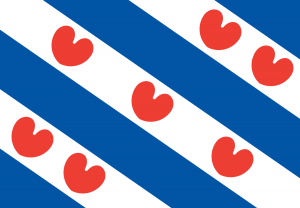Language/Western-frisian/Grammar/How-to-Use-Have
Hi Western Frisian learners! 😊
In this lesson, we will explore the usage of "have" in Western Frisian. It is essential to understand the use of "have" in the language to construct sentences and communicate fluently. Today, we will dive into this topic and help you improve your Western Frisian Grammar. Let's get started!
With the completion of this lesson, consider investigating these related pages: Negation & Interjections.
What is "Have" in Western Frisian?[edit | edit source]
In Western Frisian, "have" is "hawwe" in the present tense and "hân" in the past tense. It is a verb that indicates possession or the existence of something. For example, "Ik haw in appelsine" means "I have an orange."
Formation and Usage of "Have" in Western Frisian[edit | edit source]
"Have" in Western Frisian can be used in different forms based on the subject and tense. Let's have a look at the following table that provides an overview of how the verb "have" is formed and used in Western Frisian:
| Person | Present Tense | Past Tense | Example in a Sentence |
|---|---|---|---|
| I | haw | hân | Ik haw in hûn (I have a dog) |
| You (singular) | hast | hiest | Do hast in auto (You have a car) |
| He/She/It | hat | hie | Hy hat in boat (He has a boat) |
| We | hawwe | hiene | Wy hawwe in nij hûs (We have a new house) |
| You (plural) | hawwe | hiene | Jim hawwe in soad yndrukken fan de reis hân (You have a lot of impressions from the trip) |
| They | hawwe | hiene | Sy hawwe in gruttere hûs as wy (They have a bigger house than us) |
As you can see from the table, "have" is used in different forms depending on the subject and tense. For present tense, we use "haw" for the first-person singular, "hast" for the second-person singular, and "hat" for the third-person singular. For the plural subjects and the past tense, we use "hawwe" and "hiene" respectively.
Let's look at some more examples to understand the usage of "have" better:
Examples[edit | edit source]
Example 1[edit | edit source]
- Person 1: Ik haw in keamer oprêden. (I have cleaned a room)
- Person 2: Wat in moai wurk! (What nice work!)
Here, "haw" is used to indicate possession in the first-person singular form.
Example 2[edit | edit source]
- Person 1: Do hast sa'n moaie jas oan! (You have such a nice coat on!)
- Person 2: Tankewol, dat hat myn sus my jûn. (Thank you, my sister gave it to me.)
Here, "hast" is used to indicate possession in the second-person singular form.
Example 3[edit | edit source]
- Person 1: Hy hat neat te iten. (He has nothing to eat)
- Person 2: Wat stom! (What stupid!)
Here, "hat" is used to indicate possession in the third-person singular form.
Example 4[edit | edit source]
- Person 1: Wy hawwe in nij auto kocht. (We have bought a new car)
- Person 2: Geweldich! Wat foar auto is it? (Great! What kind of car is it?)
Here, "hawwe" is used to indicate possession in the first-person plural form.
Example 5[edit | edit source]
- Person 1: Jim hawwe noflik sliept yn it hotel? (Did you sleep comfortably in the hotel?)
- Person 2: Ja, wy hawwe tige noflik sliept. (Yes, we slept very comfortably.)
Here, "hawwe" is used to indicate possession in the second-person plural form.
Example 6[edit | edit source]
- Person 1: Sy hawwe in pear nije skoenen kocht. (They have bought new shoes)
- Person 2: Dat is moai, wêr hawwe se dy keapke? (That is nice, where did they buy them?)
Here, "hawwe" is used to indicate possession in the third-person plural form.
As you can see, "have" is used to indicate possession and existence in Western Frisian. Depending on the subject and the context, the verb takes different forms to form sentences.
➡ If you have any questions, please ask them in the comments section below.
➡ Feel free to edit this wiki page if you think it can be improved. 😎

